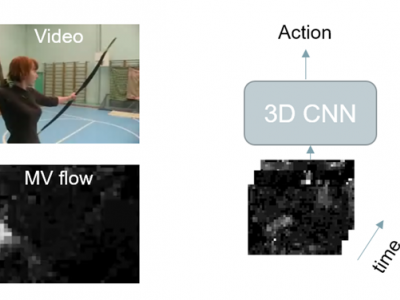Documents
Presentation Slides
COMPRESSED-DOMAIN VIDEO CLASSIFICATION WITH DEEP NEURAL NETWORKS: “THERE’S WAY TOO MUCH INFORMATION TO DECODE THE MATRIX”

- Citation Author(s):
- Submitted by:
- Aaron Chadha
- Last updated:
- 14 September 2017 - 8:03pm
- Document Type:
- Presentation Slides
- Document Year:
- 2017
- Event:
- Presenters:
- Aaron Chadha
- Paper Code:
- 2238
- Categories:
- Log in to post comments
We investigate video classification via a 3D deep convolutional neural network (CNN) that directly ingests compressed bitstream information. This idea is based on the observation that video macroblock (MB) motion vectors (that are very compact and directly available from the compressed bitstream) are inherently capturing local spatiotemporal changes in each video scene. Our results on two standard video datasets show that our approach outperforms pixel-based approaches and remains within 10 percentile points from the best classification results reported by highly-complex optical-flow & deep-CNN methods. At the same time, a CPU-based realization of our approach is found to be more than 680 times faster in the motion extraction in comparison to GPU-based optical flow methods and also offers 2 to 3.4-fold reduction in the utilized deep CNN weights compared to recent architectures. This indicates that deep learning based on compressed video bitstream information may allow for advanced video classification to be deployed in very large datasets using commodity CPU hardware. Source code and further demonstration results are available at http://www.github.com/mvcnn.

